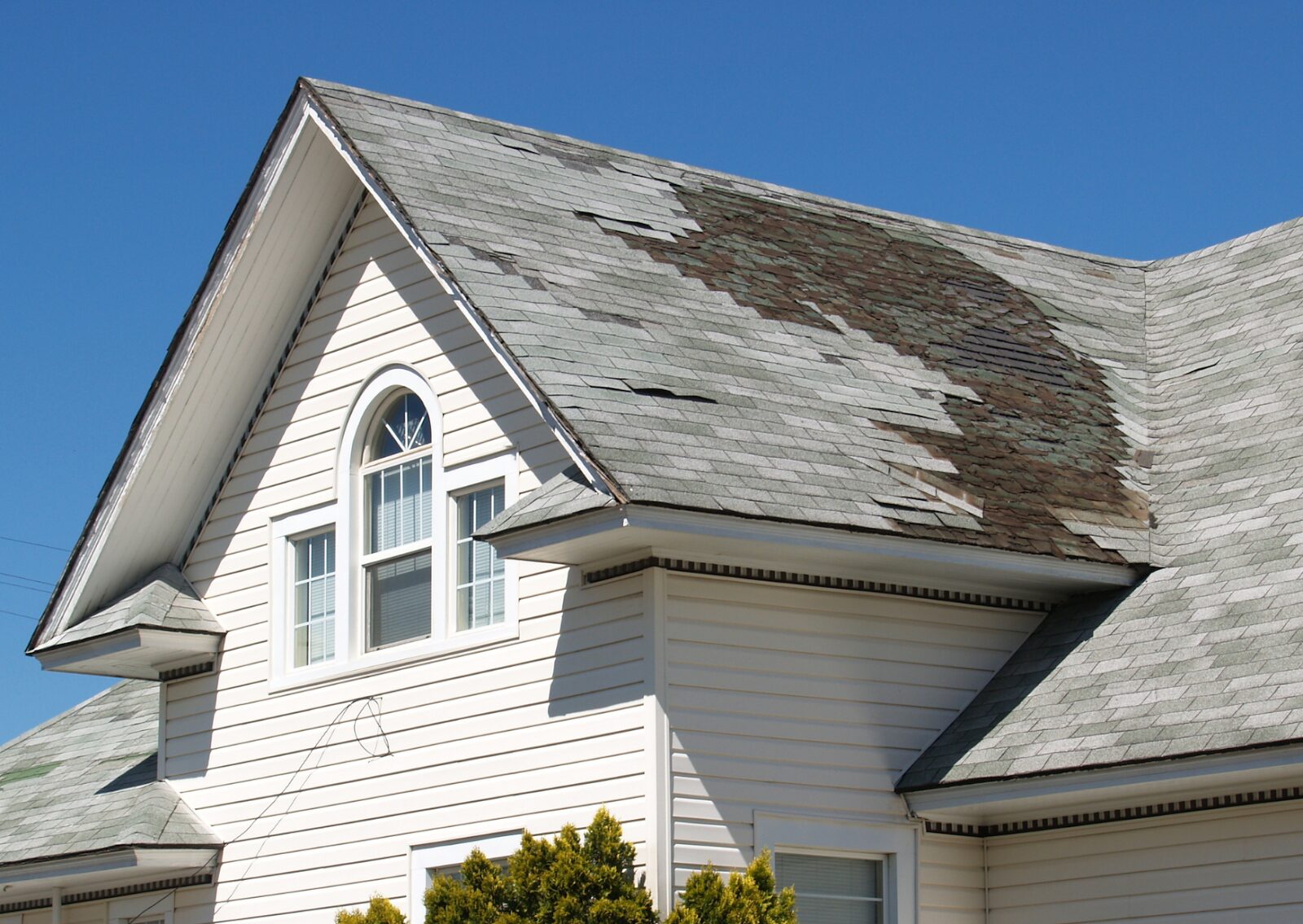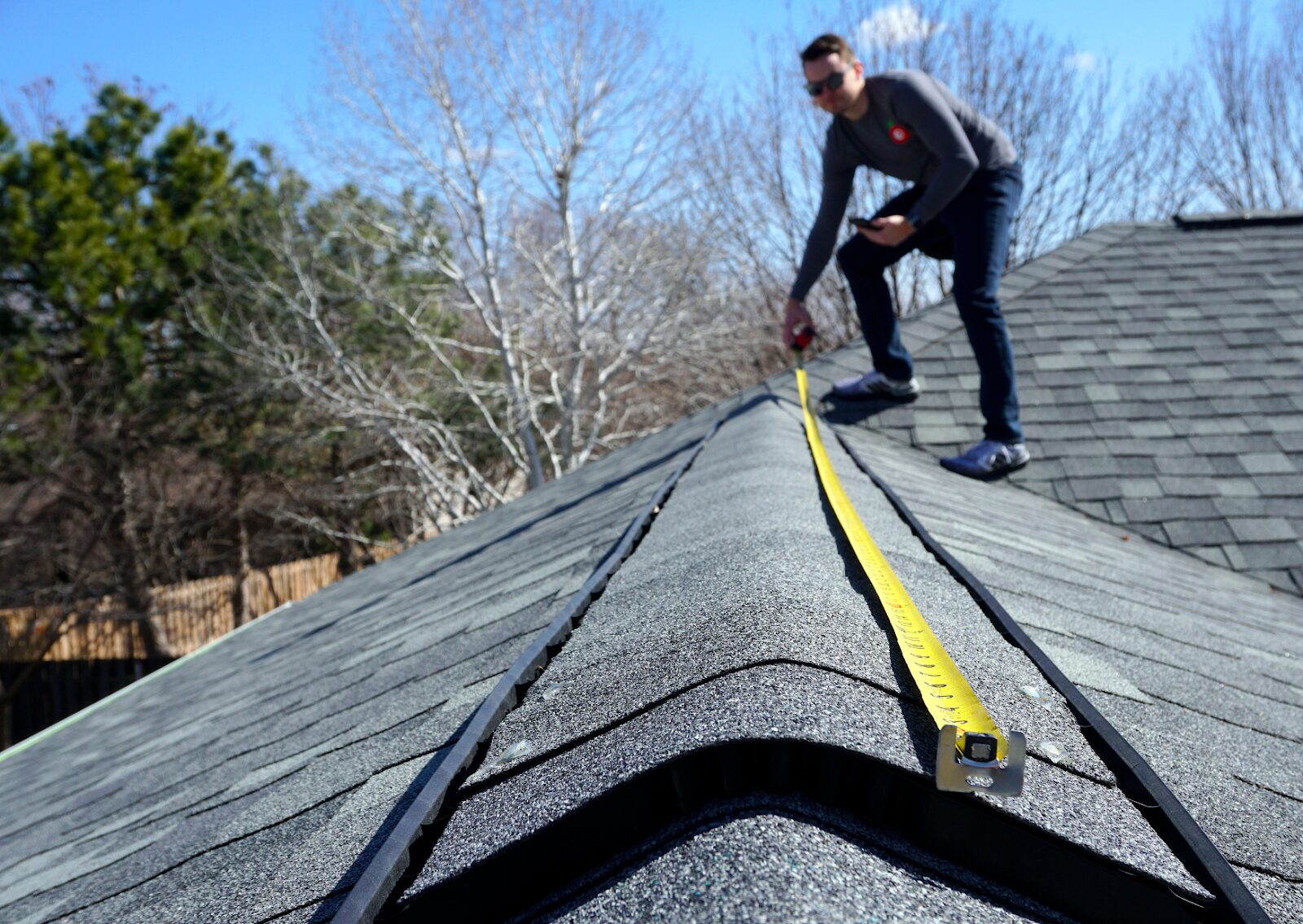A residential roof replacement is one of the most important investments you’ll ever make in your home. Your roof protects everything underneath it, and when it starts to fail, your entire property is at risk. Whether you’re replacing an old roof due to age, storm damage, or roof leaks, it’s essential to understand the full process before moving forward. At M&E Painting and Roofing, we believe homeowners deserve clear, practical information before starting any roof project, and that’s what we aim to provide here.
What Does a Residential Roof Replacement Involve From Start to Finish?

Replacing the entire roof isn’t just about laying down new shingles. A thorough roof replacement starts with removing the old roofing materials, inspecting the roof decking for damage, replacing worn-out components like roof flashing, drip edge, and roof vents, and installing appropriate roofing materials.
Depending on the roof size, slope, and existing damage, a professional team may also need to reinforce the structure before the roof installation begins. This ensures your new roof lasts for decades and meets all local building codes.
How Do Asphalt Shingles Compare to Other Roofing Materials?

What Are the Pros and Cons of Asphalt Shingles?
Asphalt shingles remain the most common choice in the residential roofing market. They’re affordable, easy to install, and come in a wide variety of styles. They’re especially ideal for a typical roof where budget and efficiency are top concerns.
Are Architectural Shingles Worth the Extra Cost?
Architectural shingles offer a higher-end appearance and longer lifespan compared to basic asphalt shingles. They resist curling shingles and provide better protection in harsh weather.
How Do Composite Shingles Compare in Durability?
Composite shingles can mimic slate, wood shingles, or clay tiles while offering improved resistance to roof leaks and construction debris. They’re a smart pick when you want style without the weight of traditional options.
Can Homeowners Do a DIY Roof Replacement Safely and Effectively?

What Safety Equipment Is Absolutely Necessary?
A diy roof replacement may seem like a good way to save money, but it comes with real risks. At a minimum, you’ll need safety equipment such as harnesses, ladders, hard hats, and fall protection.
What Are the Common Mistakes in DIY Roof Projects?
One of the biggest mistakes is underestimating the need for proper ventilation, moisture barrier, or missing components like synthetic underlayment and roof flashing. Skipping these steps can reduce the roof warranty and lead to premature failure.
When Should You Call a Professional Roofing Contractor Instead?
If you’re not trained in roofing installation, it’s best to work with a professional roofing contractor. Licensed experts ensure every step meets current standards and protect your home for the long term.
When Is the Right Time to Invest in a New Roof?

Signs like curling shingles, missing tiles, or unexplained roof leaks often indicate it’s time for a roof replaced. If your existing roof is over 20 years old, it’s worth scheduling a roof inspection.
Seasonal damage, such as hail or snow buildup, can also shorten your roof’s lifespan. A proactive replacement helps prevent damage to the home’s interior and structure.
How Do Labor Costs and Roofing Costs Add Up?

What’s Included in Labor Costs for Roof Replacement?
Labor costs include tear-off, hauling construction debris, installing new materials, and ensuring proper sealing around skylights and chimneys. These costs are generally calculated per square foot or cost per square.
How Do Labor Costs Differ by Roof Size or Material?
Steeper roofs or those with multiple layers of old shingles require more labor. Using premium roofing materials like metal roof, slate roofing, or copper roofing also increases the time and skill involved.
Why Are Estimates Often Quoted Per Square Foot or Per Square?
Most roofing contractors use “squares” (100 sq ft) as a standard measurement. This helps homeowners understand the actual cost, especially when comparing estimates across different roofing companies.
Is a Metal Roof a Better Long-Term Investment Than Asphalt or Wood Shingles?

Metal roof options offer outstanding durability, energy efficiency, and fire resistance. A new metal roof can last 40–70 years, outliving wood shingles or asphalt shingles by decades. While the replacement cost is higher upfront, the overall cost often balances out with fewer repairs and energy savings.
How Can Homeowners Accurately Estimate Roof Replacement Costs?

What Factors Affect the Actual Cost of a Roof Replacement?
The roof replacement costs depend on roof size, material choice, slope, accessibility, and removal of the old roof. Complex features like skylights, chimneys, or solar panels may also affect pricing.
How Do You Calculate Cost Per Square Foot or Replacement Cost?
By multiplying the total square foot area by the selected material’s cost per square foot and adding labor costs, you can estimate your roofing costs with better clarity.
What Is the Role of Roof Size and Roof’s Ridge or Edges?
Roofs with extended roof’s ridge, multiple valleys, or intricate roof’s edges require more materials and labor. This complexity adds to your roof replacement budget.
What Should Be Included to Cover Roof Replacement in a Roofing Estimate?

A quality estimate should itemize the following: removal of old roofing materials, roof decking repairs, synthetic underlayment, moisture barrier, roof vents, drip edge, ridge vents, and all roofing shingles. Always confirm if your roof warranty is included and whether construction debris disposal is covered.
What Makes a Professional Roofing Contractor Truly Reputable?

Hiring a reputable roofing contractor is critical. Look for proper licensing, references, and membership in professional groups like the National Roofing Contractors Association. M&E Painting and Roofing recommends verifying insurance coverage and checking customer reviews before signing any contract.
How Do You Choose the Most Appropriate Roofing Materials for Your Home?

What Factors Influence Material Quality and Energy Efficiency?
High material quality improves insulation, UV resistance, and overall energy efficiency. Look for materials with strong warranties and proven performance in your climate.
Should You Match the Same Material as Your Old Shingles or Upgrade?
If your old shingles failed prematurely, it may be time to upgrade to more durable materials like synthetic rubber, architectural shingles, or even clay tiles or slate tiles.
What Role Do Local Building Codes Play in Material Selection?
Your city or county’s local building codes may limit or guide what roofing materials you can use. A reputable contractor will ensure compliance while helping you choose the best option for your home.
What Does the Roof Installation Process Look Like With Most Roofing Contractors?

Most roofing contractors begin by removing your old roofing materials and inspecting the roof decking. They then install the moisture barrier, synthetic underlayment, drip edge, roof vents, and finally, the roofing shingles or your chosen material. At M&E Painting and Roofing, we follow a step-by-step process to make sure your roof installation is done safely and efficiently.
What Are the Hidden Costs in a Roof Project Besides Materials and Labor?

There may be hidden roofing costs such as permit fees, hauling construction debris, replacing water-damaged sheathing, and adding features like ridge vents or skylights. Confirm these in writing with your contractor to avoid surprises.
Ready to Replace Your Roof? Here’s Why You Should Contact a Reputable Roofing Contractor Today

If you’re seeing signs of wear or have concerns after a storm, don’t wait for problems to grow. A roof inspection by a professional roofing contractor can catch issues early and save thousands down the road. M&E Painting and Roofing provides honest assessments, transparent pricing, and dependable service for every roof project.
Schedule your residential roof replacement consultation today with a trusted team that puts your home first.
Final Thoughts
A successful residential roof replacement depends on preparation, the right materials, and experienced professionals. Whether you’re planning a full replacement or still considering a roof repair, understanding your options helps you make smarter decisions. We hope this guide gave you the confidence to make informed decisions about your next roof project. At M&E Painting and Roofing, our goal is to protect your home with top-tier craftsmanship and service backed by years of experience in the roofing industry.
Frequently Asked Questions:
1. What is included in a residential roof replacement?
A full residential roof replacement includes removing old shingles, inspecting and repairing roof decking, installing underlayment, moisture barriers, roof vents, flashing, drip edge, and new shingles or other roofing materials.
2. Are asphalt shingles the best option for my new roof?
Asphalt shingles are the most common choice for residential roofs due to their affordability and variety. However, homeowners looking for increased durability or aesthetic value may consider architectural or composite shingles.
3. Can I do a roof replacement myself?
While a DIY roof replacement may save money upfront, it carries serious safety risks and potential installation errors. It's usually best to hire a professional roofing contractor to ensure proper workmanship and warranty protection.
4. How do I know when it’s time to replace my roof?
Signs like curling shingles, persistent leaks, visible damage, or a roof that’s over 20 years old are common indicators that it’s time for a new roof.
5. How are roof replacement costs calculated?
Roof replacement costs are typically based on roof size, slope, material choice, labor costs, and accessibility. Most contractors charge per square foot or per square (100 square feet).
6. Is a metal roof better than traditional shingles?
Metal roofs last significantly longer than asphalt or wood shingles and offer better energy efficiency. Although the initial replacement cost is higher, the overall cost can be lower due to reduced maintenance and extended lifespan.
7. What should be included in a roofing estimate?
A proper roofing estimate should detail labor, materials, underlayment, flashing, ventilation, debris removal, and whether a roof warranty is included.
8. How do I choose the best roofing materials for my home?
The best materials depend on your budget, climate, aesthetic preference, and local building codes. A reputable contractor can help guide your selection based on durability and energy efficiency.
9. What are the hidden costs in a roof replacement?
Hidden costs may include permit fees, disposal of construction debris, water-damaged decking, or the addition of ridge vents or skylights.
10. Why is it important to hire a reputable roofing contractor?
Hiring a reputable roofing contractor ensures your roof is installed to code, backed by warranties, and built to last. Look for contractors affiliated with organizations like the National Roofing Contractors Association.
